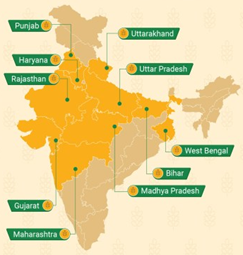

4th April 2023 (7 Topics)
Context
While farmers in India look forward to rains every year, the ongoing unseasonal downpour across West and North India has come as a bane that has damaged crops and disrupted the harvest season.
The damaging combination (Heat+ Rain)
- Unnaturally high temperature: Before the downpour began in March, India had already experienced the hottest February in over a hundred years. That was critically damning to the wheat crop.
- Heavy downpour: The high temperature immediately preceded unseasonal downpour.
While occasional bursts of rainfall are not that much of an issue, the continued rainfall along with high winds has damaged crops across West and North India. These rains came right after premature hot temperatures. The combination is very damaging to wheat.
How wheat gets affected by rain?
- Wheat is sensitive to both heat stress and rain/ thunderstorms during the terminal grain filling and ripening period.
- This is the time when the crop’s earheads are heavy with grains.
- The more the weight accumulated from grain-filling, the more vulnerable is the crop to rain.
- These, when accompanied by high-velocity winds, make the stems prone to “lodging” or bending and even falling flat on the ground.
|
Wheat cultivation in India:
|
Is it going to impact the food security?
- India has 15 agro-climatic zones, plus there are sub zones too. Unseasonal rainfall or other climatic disasters are limited to some of these areas.
- An “Agro-climatic zone” is a land unit in terms of major climates, suitable for a certain range of crops and cultivars.
- Thus, the overall food security is not affected, however, the impact is limited.
|
India’s Agro-Climatic Zones
|




